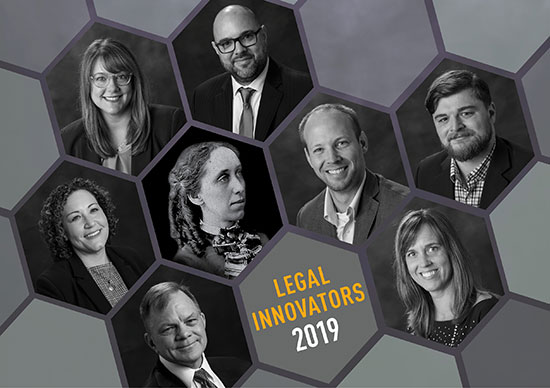
What’s it take to innovate? According to this year’s Wisconsin Legal Innovators, it requires a mindset that accepts the risk of failure and a desire to win that is stronger than the fear of losing. They view failure as another chance to get it right. They listen to their clients. In some cases, it takes the perfect marriage of technology, process, and attorney know-how. Each year, nominations come from the legal community; it’s a grassroots effort to identify innovation.
Jump to a Wisconsin Legal Innovator
“The 2019 lineup of Wisconsin Legal Innovators recognize that they needed to change how they provide legal services in an increasingly competitive environment, in a way that positively affects clients,” says Tom Watson of the State Bar of Wisconsin Communications Committee’s Legal Innovation Subcommittee.
“What they’re doing helps reach people who need legal services but have been shut out of the system,” he says. “Or they have changed their billing practices, or the way they communicate with clients, to make it easier for clients to understand the process and get the help they need more easily.” Or, in one case, changed the course for women in the law.
While new technology can be part of these innovations, sometimes it’s just getting away from the way it’s always been done, Watson says. “This year, we’re recognizing a lawyer who is using a technology-enabled client service platform to help serve tech startups,” he says. “We found a program that is providing legal services to victims of domestic violence, who might not otherwise get the help they need. We’re calling attention to a lawyer whose business model includes using on-demand learning for clients seeking help with immigration and citizenship issues.
“We also found a lawyer who has developed a platform that integrates financial analysts with attorneys who have tax, accounting, and negotiation experience,” he adds. “And we are also recognizing lawyers who are providing easier access to low-income clients trying to navigate through their civil legal needs. In one way or another, the innovations these lawyers have implemented have led to better client services, some of them pro bono.”
The selection of this year’s legal innovators comes with an unexpected twist – giving the Lifetime Legal Innovator award posthumously to Lavinia Goodell, the first woman lawyer in Wisconsin. In the wake of recent extensive research into her life, Wisconsin lawyers Colleen Ball and Nancy Kopp have worked to preserve her contributions to the right of women to practice law in Wisconsin.
Lifetime Innovator Lavinia Goodell: Paving the Way for Women

Lavinia Goodell (1839-1880) was the first female lawyer admitted to the Wisconsin Supreme Court in 1879, after earlier having been denied admission because of her gender. She was
instrumental in getting the Wisconsin governor to sign a law allowing women to be attorneys in 1877. Design: Diana Hoover, Strong Heart Design
An attorney 150 years ago, Lavinia Goodell (1839-1880) fought a tough but successful battle to become the state’s first female lawyer and ultimately represent clients in court – at a time when male lawyers typically did not even agree to represent female clients, Watson says.
“Male lawyers wouldn’t accept her as an apprentice, so she studied on her own,” he says. “Eventually a male judge admitted her to the Rock County Circuit Court. She won her first court trial. When she appealed a case to the Wisconsin Supreme Court, she was denied admission because of her gender [although later admitted in 1879]. She was instrumental in getting the Wisconsin governor to finally sign a law allowing women to be attorneys, in 1877.”
Goodell’s historic contributions remain visible today, Watson says, from the fact that one-half of law students at the U.W. and at Marquette Law Schools are women, to the very visible benchmark that five of the seven justices on the Wisconsin Supreme Court are women. “With next year’s 100th anniversary of women’s right to vote, what better time to recognize Lavinia’s role in opening the doors for women?” he says. “It is hard to imagine a more dramatic legal innovation of sustained impact.”

Know a legal
innovator? Are you
one? Nominations
for 2020 open April 1
and close on June 30.
To learn more, visit
ThatsaFineIdea.com.
Champion for Women’s Rights. The daughter of a prominent abolitionist, Goodell eagerly represented women and their interests in court. She saw firsthand how the law oppressed them and worked to change it, according to Colleen Ball, appellate attorney with the Wisconsin State Public Defender, and Nancy Kopp, supreme court commissioner with the Wisconsin Supreme Court, who jointly researched Goodell’s life and work and placed her name in nomination.
During her years as an attorney and advocate, Goodell championed the cause of not only women’s suffrage but also women’s rights to own property, retain custody of their children, and receive financial support when they divorced abusive or neglectful husbands. Legislation she proposed on this topic did not pass but launched a conversation.
If Goodell were alive today, Ball believes that in addition to celebrating the upcoming centennial of women’s suffrage, “I suspect she would have been at the first Women’s March. She would be in favor of the #MeToo movement. Part of the reason she was so vocal on temperance was that when husbands drank – it wasn’t just a moral thing for her – if they were drunk, they wouldn’t be supporting their families and might be abusing their wives.”
Given Goodell’s work in the area of prison reform, Ball believes Goodell would be working to oppose mass incarceration and in favor of diversion programs. “She was a big proponent of rehabilitating people so that they could reenter society and be successful, as opposed to just punishing people,” she says. “She really thought that when people made mistakes, they could be educated and improve themselves and become self-sufficient.”
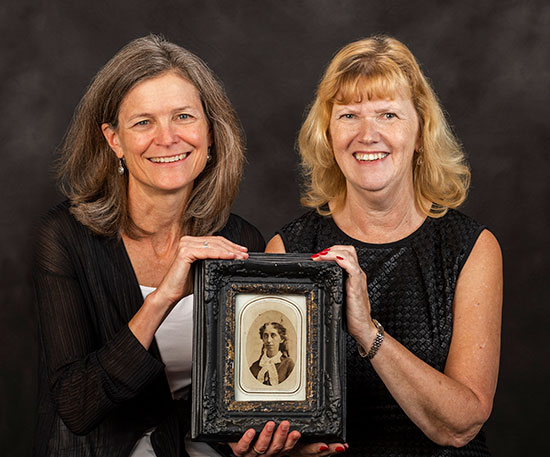
Colleen Ball and Nancy Kopp hold a photo of Lavinia Goodell (circa 1870). To preserve Goodell’s legacy, they’re telling her
story through blog posts at the website, “Lavinia Goodell: The Private Life and Public Trials of Wisconsin’s First Woman
Lawyer,” www.laviniagoodell.com.
Preserving a Legacy. Ball and Kopp believe the drama of Goodell’s battle to open the Wisconsin bar to women is important to history, but there is much more to her life story. The trove of intimate primary sources uncovered through their research is the kind biographers dream of. Yet, Goodell has no substantial biography, and they mean to correct that. With funding from the Wisconsin Humanities Council and support from the Rock County Historical Society, Ball and Kopp built a website, Lavinia Goodell: The Private Life and Public Trials of Wisconsin’s First Woman Lawyer – a digital biography – or, if you will, a “blog-ography,” Ball says. “We’re telling her story through blog posts of snapshots of Goodell’s life, though not in chronological order. In one you might learn of her father’s delight at her birth. In others you will read about her thrill at seeing President Abraham Lincoln in New York City, her joy at becoming a lawyer, the stories behind her cases, her reflections on marriage and spinsterhood, her jail-house school, her face off with Edward Ryan, her agony in committing her mother to a mental institution, and her search for cures for her own fatal illness.” For a deeper look, see the sidebar, “Revealing the ‘Real’ Lavinia Goodell.”
Ryan Poe-Gavlinski: Protecting Survivors of Intimate Partner Violence
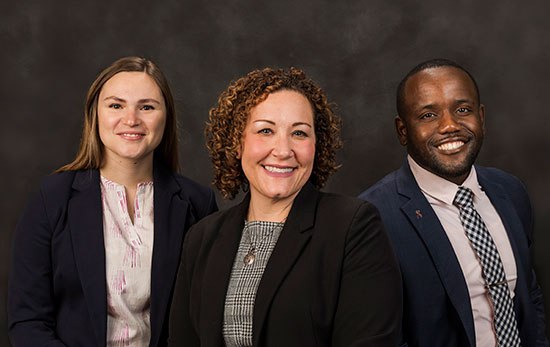
Ryan Poe-Gavlinski (center) and her students, Chelsea Thibodeaux and Taijae Evans, among others, support survivors of
intimate partner violence through the VOCA Restraining Order Clinic at the U.W. Law School. The clinic provides direct
training for law students as they help clients from four counties secure protective restraining orders. Photos: Andy Manis
Lavinia Goodell’s legacy lives on in the work of the Innovation Award-winning VOCA Restraining Order Clinic, launched this year at the U.W. Law School. The Victims of Crime Act (VOCA) clinic supports survivors of intimate partner violence and provides direct training for law students as they assist clients in securing protective restraining orders.
With supervision and mentoring from clinic director Ryan Poe-Gavlinski, students help victims of domestic violence through each step of the process, from interviewing, to drafting and filing court documents, to preparing for hearings and examining witnesses. To obtain a restraining order in Wisconsin, a client must first petition for a temporary order and testify before a judge, who decides whether to authorize an injunction for up to 10 years.
Given that one study found only 32 percent of survivors without an attorney succeed in this process, while 83 percent with an attorney obtained an injunction, legal aid can be critical. But most survivors do not gain access to a lawyer, while accused abusers have a right to an attorney because they’re being criminally charged. Providing services in Dane County and three surrounding, smaller counties, students gain experience in trauma-informed lawyering so they understand how to make clients feel safer, in addition to knowing how to file paperwork and build a case.
To date, more than 50 clients have been either represented or advised, and the clinic provides referrals to local domestic violence programs as well as community resources for necessities like food, shelter, transportation, and healthcare. Because restraining order cases usually take less than one month, students are able to see a case through from beginning to end.
The Clinic Takes Shape. Ryan Poe-Gavlinski worked with several other people to build the clinic, all of whom share in the Innovation award: Professor Marsha Mansfield, director of the Economic Justice Institute at U.W. Law School; Professor Carrie Sperling, co-director of the Wisconsin Innocence Project; State Representative Cody Horlacher, chair of the Committee on Access to Civil Legal Services; and Michelle Viste, director of the Office of Crime Victim Services at the Wisconsin Department of Justice.
Mansfield had run a family court clinic for many years and sometimes did a restraining order clinic in conjunction with it, says Poe-Gavlinski, but the new clinic represents a more dedicated, better funded effort. Referrals have been pouring in from domestic violence and victim witness programs in district attorney’s offices in all four counties. “We are really, really, really busy,” she says. “We’ve taken on all types of restraining orders, and gone into all four of the counties.”
A Focus on Trauma-informed Lawyering. For some survivors, simply participating in the restraining order process can be as painful as the crime itself. The clinic’s emphasis on trauma-informed lawyering means student attorneys learn to recognize and address survivor trauma to help their clients feel safer.
Students learn by doing, but also through classroom instruction that includes guest speakers such as police officers and domestic abuse program staff. “It takes a lot of patience and time, and a lot of listening to work with these clients,” Poe-Gavlinski says. “Because they are going through trauma, and PTSD, it is not always easy to get information. Their ability to stay in contact can be difficult. They want to tell you what’s important to them, not necessarily what you want to know. Sometimes you just have to be comfortable with silence.”
A veteran of criminal defense work in southern California, legal aid work in West Virginia, and a staff attorney position with the Indiana Department of Family Services, Poe-Gavlinski had plenty of hands-on experience but none in teaching. She has learned to restrain herself from telling students what to do every step of the way.
“I let them go at their own pace, at what their comfort level is,” she says. “I had students last semester who never thought they wanted to be in court, who are now looking at jobs in public interest because they enjoyed doing it so much. The specialty they learn, how to work with these specific clients, makes them an asset to the community.”
As the effort enters the second year of a three-year grant, Poe-Gavlinski foresees the clinic potentially building to handle a broader docket of family law matters, but she knows it would need more resources. “We’re working on ways to assist our clients holistically,” she says. “If we have a client who might need mental health assistance, immigration assistance, food stamps, anything like that, we might need connections to get services. When you’re dealing with a person who is attempting to be protected from an abuser, who’s leaving an abuser, without providing those resources, it’s more difficult.”
Ili Subhan: On-demand Learning for Immigrants
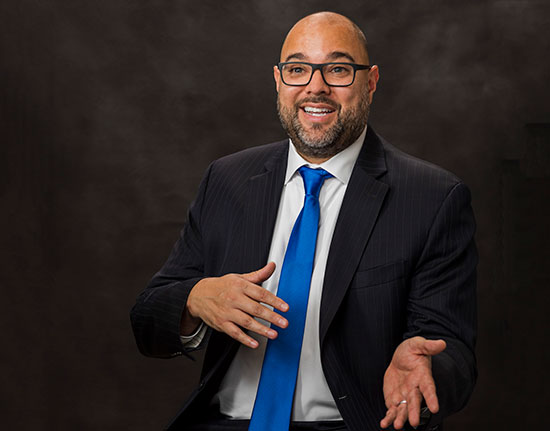
Ili Subhan, a Milwaukee-based immigration lawyer, built a website to help clients applying for marriage green cards
go step by step through the complicated application process. The 24-7 resource provides instructional videos, forms,
templates, guides, and more, creating efficiencies that allow him to provide the legal services clients need.
Non-citizens planning to stay in the United States with their spouse have a new online resource thanks to Ili Subhan, a Milwaukee-based immigration lawyer. Subhan built a tool to help those applying for a marriage green card go step by step through the application process. His website enables clients to watch instructional videos that tell them what documents they need to file, how to upload them, and what to expect from there – how forms are prepared and how interviews will go.
The 24-7 resource also provides templates, guides, and other resources, but with a lawyer on the other end who answers questions, provides updates, files on the client’s behalf, and conducts a mock interview via videoconference. Subhan believes he is the only immigration lawyer in the United States to create such a system for the complicated, time-consuming marriage green card process.
Since the learning center went online Jan. 1, 2019, Subhan’s clients have had a 100 percent success rate in obtaining green cards, and all clients have told him they appreciated the experience; even those who were apprehensive at the outset gained confidence in the ease, convenience, and thoroughness, Subhan says.
Creating Efficiencies to Grow Business. “Over the years, I noticed that many of my clients, specifically for marriage green card cases, had the same issues or questions for every case,” he says. “I was using a lot of my time addressing the same issues and questions over and over. I knew that if I wanted to grow my practice and help more people that I needed to figure out a way to address those same issues and questions in a more efficient way.”
Subhan figured that an on-demand resource would provide clients the information they need and reserve his time for growing his business. A combination of research, planning, hard work, and creativity brought the site to fruition, he says. Challenges included researching the software needed, mapping the process, ensuring that the end result would deliver value to clients, and educating clients on something that was new to the market, Subhan says.
Going forward, Subhan hopes to add new visa categories. “Soon, it will help those seeking to visit, work, start a business, and invest in the United States,” he says. “For example, many people who are here on H-1B work visas would like to also invest in real estate, and they want to make sure they are doing so in accordance with immigration law. So we will develop an online course explaining how to invest in real estate under your H-1B visa and be compliant with U.S. immigration law.”
Tripp Stroud and Andrew Briggs: Platform for Fast-paced Healthcare Tech Startups
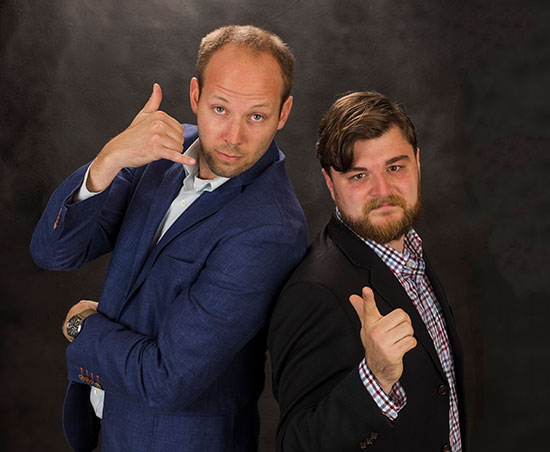
Tripp Stroud and Andrew Briggs founded Madison-based Trifecta General Counsel LLC that offers a secure cloud-based
tool to help fast-moving technology startups collaborate and build their businesses. Trifecta lawyers work with clients in
real time on complex, technical legal documents and provide additional services for a flat monthly fee.
Healthcare technology startups are taking advantage of an online client-service platform created by Madison-based Trifecta General Counsel LLC. The completely paperless, cloud-based tool offers fast-moving technology companies a platform that the founders believe will keep up with them better than traditional legal services.
The platform offers secure online document collaboration allowing Trifecta attorneys to work with clients in real time on complex, technical legal documents. Clients can track existing matters or assign new ones and have access to a secure and searchable history of project-related communications. Clients have private access to lawyers’ schedules to make appointments at their convenience. Using videoconference software, Trifecta connects with clients for face-to-face meetings. Services also include automated twice-monthly progress reports, monthly one-to-one meetings with executives, and twice-annual company “health checks” that cover growth prospects and challenges, all for a flat monthly fee with no hourly limit.
Delivering What Technology Companies Need. Co-founders Tripp Stroud and Andrew Briggs previously worked at Epic Systems, an innovative healthcare IT company, which gave them a first-hand understanding of the needs of technology companies. At Epic, they learned that technology companies:
-
need the ability to forecast how to spend a limited budget, while law firms typically bill by the fraction of an hour, causing budget uncertainty;
-
operate at a fast pace with sometimes messy processes, while law firms tend toward meticulousness and formality; and
-
require aggressiveness in trying, failing, and trying again, while law firms are often risk averse.
After starting with one Madison-based client three years ago, Trifecta has earned contracts with healthcare systems, insurers, and pharmaceutical companies nationwide. Some clients have raised tens of millions in venture capital dollars, and the firm has tripled its revenue every year, the co-founders say.
Stroud says, “While at Epic we also got a taste of what it’s like to be in a fast-growing company and in an environment where decisions need to be made quickly, and legal is just one of the factors going into it. We gained insight into the entrepreneur’s mindset, in addition to the subject matter expertise. That partly inspired the way we developed Trifecta. How we interact is just as, if not more, important than the counsel we give.”
Using the types of tools that tech companies use to talk to one another helps bring about that interaction. “All law firms should think about using client service platforms, no matter what their line of business,” he says.
Angela Schultz and Mary Ferwerda: Role-playing Illustrates Challenges for Self-represented
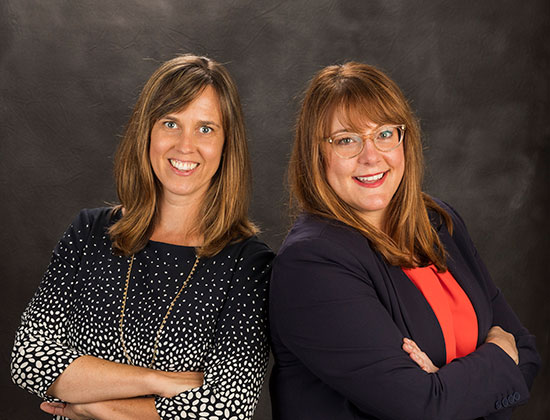
Angela Schultz and Mary Ferwerda, of Marquette University Law School and the Milwaukee Justice Center, developed an
experiential learning activity called “Lost in the Law.” The role-playing game educates various participants in the justice
system about the complex circumstances facing lower-income Wisconsinites in navigating the court system.
Lawyers are automatically appointed to criminal defendants, but not those in the civil arena. This means an increasing number of plaintiffs and defendants in civil cases must represent themselves.
Enter Marquette University Law School and the Milwaukee Justice Center, which have developed an experiential learning activity called “Lost in the Law.” It’s a role-playing game designed to educate the various participants in the justice system about the complex set of circumstances facing lower-income Wisconsinites in navigating the court system.
The idea originally came from a question posed on the Voices for Civil Justice national electronic list: “Who has a tool, similar to a poverty simulation, that illustrates the challenges facing unrepresented litigants?” No one did, but many on the elist seemed interested, so Angela Schultz, assistant dean for public service at Marquette, reached out to Mary Ferwerda, executive director of the Milwaukee Justice Center.
Their organizations teamed up to build a simulation with help from Legal Action of Wisconsin, Wisconsin’s New Leaders Council, and the Public Interest Law Society at Marquette. Schultz says that knowing they had “student capital” to help out is part of why they thought it would work. In addition, Ferwerda says, “We had both participated in simulations for poverty and domestic violence situations. We had an idea of how this could work.”
Rooted in Reality. But creating the characters and scenario proved more challenging than they expected. “At first, we thought it was writing small vignettes,” Schultz says. “But we had a goal of making this rooted in reality. Yes, they’re fictional characters, but we took great care in making them rooted in someone’s experiences.” Students helped create the characters as well as props for the game such as forms, parking tickets, and “all the little pieces that bring characters to life,” Ferwerda adds.
The 90-minute simulation debuted at the Wisconsin Equal Justice Conference in March 2019, and later was presented to the United Way of Greater Milwaukee & Waukesha County and a group of volunteer lawyers and law students at Marquette. It also was used at the Judicare Conference in October.
“We’ve had a number of folks reach out and say, ‘We’d love to do this,’ including the Milwaukee Bar Association,” Ferwerda says. “United Way was the first audience of mostly nonlegal professionals, and the role playing worked – it happened the way we always dreamed it would happen.”
But even at the Equal Justice Conference, participants who are familiar with the challenges for pro se litigants said the simulation opened their eyes. For example, someone from a legal aid office played a character who was told they could have a legal aid appointment in two weeks’ time. “The person thought, ‘That doesn’t work for my character, at all,’” Schultz says. They’ve needed to adjust characters and situations at times. “There’s something to be said about stepping back, even if you are entrenched in the work.” Adds Ferwerda, “It’s a great tool to help people understand more what it’s like to be in poverty in Wisconsin and facing legal issues, along with the other issues that come up for litigants. For example, there’s a snowstorm, and the bus is not available. You miss your hearing. You lose your child care.”
Schultz and Ferwerda hope to create an electronic format for the game. They’re also creating a “generic” version for use in other states, and they are submitting a proposal to introduce the activity nationwide at the National Equal Justice Conference.
Timothy Nettesheim: Turnkey Mergers and Acquisitions Platform

The von Briesen & Roper team celebrate the development of a “one-stop shop” for clients selling, buying, or refinancing their businesses. The platform brings together financial analysts
and lawyers with tax, accounting, and formal negotiation experience, creating more efficient project management, proper resource allocation, and more predictable outcomes in
structuring deals. The team provides milestone-based flat fees for all projects, eliminating competition among service providers and aligning everyone’s interests. Front, from left: Lori
Waldron, Timothy A. Nettesheim, James A. Pellegrini; back row: Thomas A. Myers, Andrew T. Frost, and Erik Vickstrom.
Attorneys in tax and other financial areas might be curious to learn about the new “one-stop shop” for clients selling, buying, or refinancing their businesses created by Milwaukee-based von Briesen & Roper.
The turnkey platform brings together financial analysts and attorneys with tax, accounting, and formal negotiation experience, putting in place more efficient project management, proper resource allocation, and more predictable outcomes in structuring deals. The comprehensive, multidisciplinary team also provides milestone-based flat fees for all projects, eliminating competition among service providers and aligning everyone’s interests.
Led by partner Timothy Nettesheim, the M&A team put together the platform upon moving to von Briesen & Roper in 2017. In fact, it prompted their move. Each client works with a project manager who is their primary point of contact for each piece of the transaction, rather than a siloed array of professionals.
Nettesheim, an M&A lawyer for 36 years, says that “back in the day,” accounting firms did accounting, boutique investment banks didn’t exist, and lawyers did investment banking as part of their practice. As accounting firms expanded, investment banks came into being, and the law business boomed in other areas, lawyers got away from this type of work. But as the legal business has stagnated in the past decade or two, and accounting firms and banks have continued to expand their influence, he and his team saw an opportunity.
Aligning With Client Interests. “The biggest threat to the structure is that fee splitting will go away,” he says. “Accounting firms are going to be our direct competition. It’s just a matter of time. Secondarily, all of my clients are businesses. They live in a world that’s very simple: do more for less. Billable hours are the antithesis of that.” But accounting firms and investment banks don’t necessarily provide that budget certainty, either, because they use a “success fee” model that has no bearing on a deal’s value, he adds.
 Ed Finkel is an Evanston-based freelance writer.
Ed Finkel is an Evanston-based freelance writer.
“I can price at 50-80 percent of what they charge,” Nettesheim says. “We’re way more efficient because we’re not success-fee driven. We have to be efficient. We divide a transaction into five parts, and we price each at a flat fee.” Plus, he says, “We have defined ethical standards and consequences – a variety of things that translate into trust. That usually means a better result.”
The von Briesen team does financial and legal due diligence from the beginning, which addresses the fact that “most deals blow up because legal diligence finds something that the financial guy didn’t know about,” Nettesheim says. “You get a better result when interests are aligned. The client wants a solution, but they want to be told not to do the deal if it’s a bad deal, from someone who has a dispassionate perspective.”
Nettesheim and his team overcame internal resistance by pointing out that attorneys weren’t getting many referrals from investment banks, anyway, and that lawyers have done this type of work in the past, just not the recent past. “It keeps you at the intersection of what clients are doing,” he says. “Clients get it immediately. The biggest problem is getting them to the door.”
Hey Innovator, What Do You Think?
 Timothy Nettesheim: How Do You View Failure?
Timothy Nettesheim: How Do You View Failure?
Do you love to win more than you hate to lose? Innovation requires a desire to win that is stronger than the fear of losing. If the fear dominates your mind, innovation will stall. Idea. Action. Failure. Adaptation. Success. This is the iterative process of innovation.
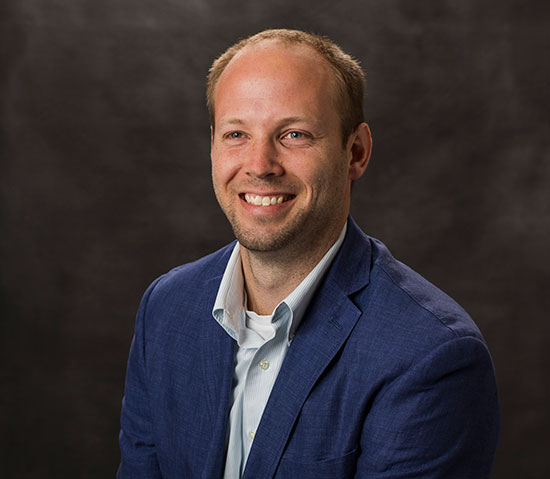 Tripp Stroud: How Do You Go from Idea to Action?
Tripp Stroud: How Do You Go from Idea to Action?
We ask clients incessantly how to improve our services. We deploy their feedback and our observations and shape them into a new feature or service. We test, listen, and iterate. Bottom line, we prioritize getting client feedback.
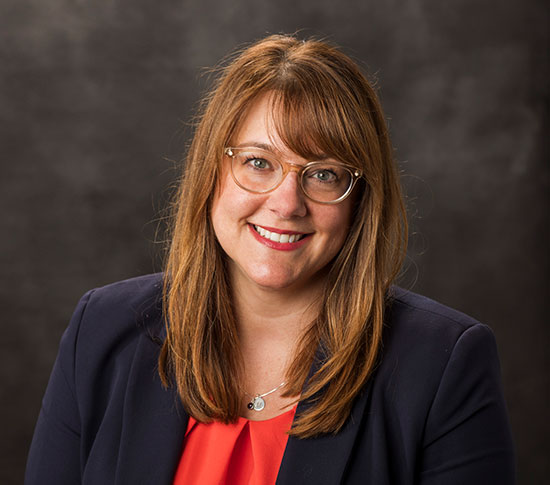 Mary Ferwerda: How Do You Overcome Challenges?
Mary Ferwerda: How Do You Overcome Challenges?
A wall hanging in my childhood home read, “It's not the mountains ahead that wear you out, it's the grain of sand in your shoe." It’s not the obstacle that is difficult, but the minutiae that can become overwhelming. Challenges are an important part of innovation. It’s your response to them that determines the next steps.
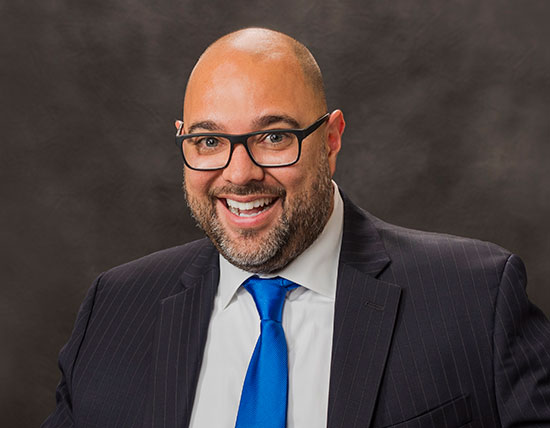 Ili J. Subhan: How Do You Spot Opportunities to Innovate?
Ili J. Subhan: How Do You Spot Opportunities to Innovate?
I’m always seeking ways to leverage technology and attorney know-how in order to improve the client experience and help transform my clients’ lives for the better. Focusing on solutions to client needs or process improvements and staying current on technology allow me to spot opportunities to innovate.
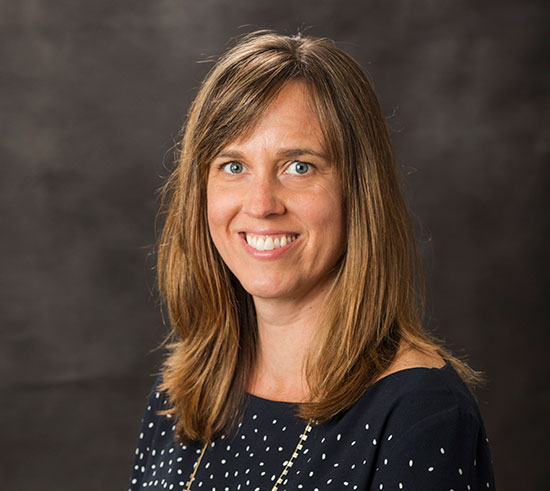 Angela Schultz: Where Do You Get Your Best Ideas?
Angela Schultz: Where Do You Get Your Best Ideas?
If you’re looking for inspiration, spend time with students. Engaging with people as they are steeped in learning is a prime way to wake my curious and creative self.
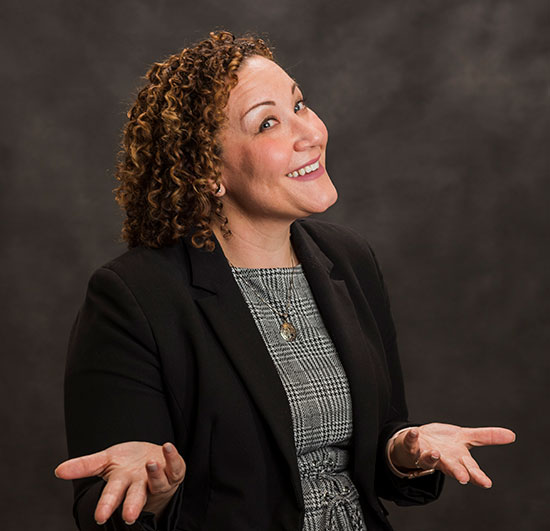 Ryan F. Poe-Gavlinski: How Do You View Failure?
Ryan F. Poe-Gavlinski: How Do You View Failure?
When implementing new ideas, you will rarely get it “right” the first time around. Failure is part of the process. But failure is only absolute if you allow it to be. View failure as a stepping stone, an essential path toward success.
 Andrew Briggs: How Do You Recharge Your Batteries?
Andrew Briggs: How Do You Recharge Your Batteries?
It may seem a little bit outside of the box, but when I have time to unwind, I love to sit down and find a couple of hours to watch professional wrestling. After a long day of negotiating contracts, watching some TV with characters who wear all of their thoughts and emotions on their sleeves is a bit refreshing.
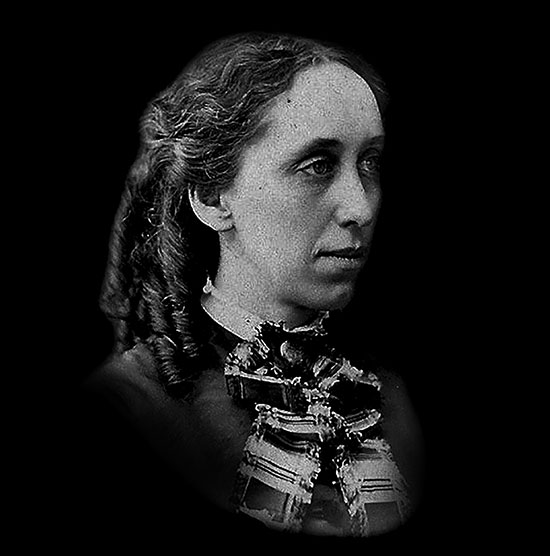 In Her Own Words: Lavinia Goodell On Advocating for Women in the Legal Profession
In Her Own Words: Lavinia Goodell On Advocating for Women in the Legal Profession
Women attorneys are in a position to see in what manner women may be benefited by a change of laws. They are quicker to discover where in the law wrongs women, and more earnest in having it righted than gentlemen attorneys are. They see the necessity of women on juries, in cases in which a woman is a party, or the interests of women are involved; the desirability of women judges and justices, the numerous wrongs done to women by remnants of the old common law not yet swept away, and by careless and imperfect legislation.
A class of women as practicing attorneys seems absolutely necessary to discover, and make an effort at correcting, those minor injustices which, for lack of such vigilance, are seldom brought to the attention of our legislators. (“Woman in the Legal Profession,” a paper read by Lavinia Goodell at the Fourth Woman’s Congress held in Philadelphia in October 1876, printed in Woman’s Journal, Vol. 7, no. 48, Nov. 25, 1876)
Revealing the ‘Real’ Lavinia Goodell
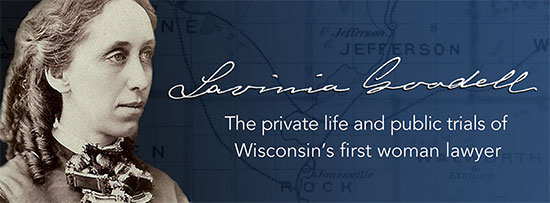
“The superior masculine mind has a terror of being laughed at.” – Lavinia Goodell, Nov. 18, 1873
Quips like this one charmed Colleen Ball and Nancy Kopp into conceiving the website and writing the blog, Lavinia Goodell: The Private Life and Public Trials of Wisconsin’s First Woman Lawyer (www.laviniagoodell.com). Goodell was instrumental in getting the Wisconsin governor to sign a law allowing women to be attorneys, in 1877.
Kopp first learned of Goodell in the late 1970s. She became more aware of Goodell’s contributions when writing a college paper about her years later, but didn’t think much more about her until she lunched with Ball. Ball also realized Goodell’s story had lots of potential when she discovered research materials that her daughter had collected years earlier for a National History Day class project on the theme “Taking a Stand in History.” “I saw the box [of research materials] in the closet and thought, ‘Something should be done,’” Ball recalls.
Ball also discovered articles Goodell had written along with an unpublished biography that Goodell’s sister had written about her. Kopp found Goodell’s probate file and her mother’s probate and guardianship files. Clearly, Kopp had missed her calling as a private detective. She tracked down Goodell’s living relatives, uncovered a mystery, and dug up all sorts of rarely seen primary sources.
Uncovering a Mystery
When Goodell died in 1880, she left her personal belongings to her sister Maria Frost. When Maria died in 1899, her son William Goodell Frost was president of Berea College in Berea, Kentucky. He placed the Goodell family papers, which included Lavinia’s diaries and correspondence, but no photographs, in the Berea College library. Lavinia might never have had a public face were it not for the fact that in 1959 two writers were simultaneously doing research for dueling biographies, neither of which was ever published.
In New York, Dorothy Thomas was working on a large-scale project about early United States women lawyers. She wrote to Dr. Norman Frost, Lavinia’s great-nephew, asking if he could supply a picture to accompany the chapter on Lavinia. Frost sent a photo. Thomas made a copy and returned the original. At the same time, Elisabeth Peck, a retired Berea College professor, was writing a book devoted to Lavinia. She learned about the picture Thomas had obtained and got a copy from her. The photo was added to the Goodell family papers, and for 60 years, whenever someone asked Berea College for Lavinia’s picture, that photo was dispatched.
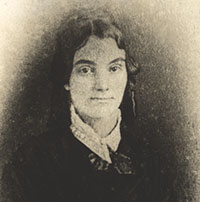
Unknown woman,
incorrectly depicted as
Lavinia Goodell.
There was just one little problem. Frost had sent Thomas the wrong picture.
As a child, Frost’s daughter, Sarah Stamps of Nashville, had seen the picture that her father sent to Thomas. She recalled her grandmother saying she did not know that woman’s identity. Stamps also remembered seeing a daguerreotype of Lavinia and her father, William Goodell. When Stamps showed Frost the daguerreotype, which clearly did not depict the woman in the photo sent to Thomas, his response was, “Well, the daguerreotype would have been harder to send, and the one I sent is much better looking.”
Today, multiple websites mentioning Lavinia include the incorrect photo. The family has attempted to correct the record; unfortunately, once erroneous information is on the internet, it is usually there to stay.
A Family’s Perspective
Descendants whom Ball and Kopp contacted during their research had their own thoughts about their accomplished relative. Goodell was a self-described spinster, but her older sister Maria had six children, four of whom survived to adulthood and produced descendants. Sarah Stamps, granddaughter of Goodell’s eldest nephew, is proud that Goodell persisted through adversity and believes that, if alive today, she would be working for prison reform and helping solve problems of homeless people.
“I don’t think that Lavinia’s accomplishments even in becoming a lawyer, much less in getting to practice before Wisconsin’s Supreme Court, were appreciated by her family,” Stamps says. “The only person I knew who had known Lavinia was my grandfather, and he was more interested in the fact that she had helped her father in publishing his abolitionist papers.”
Steven Bates, a great-great-grandson of Goodell’s only sister, has researched her in the Rock County Historical Society’s archives. He’s inspired by her resistance to Wisconsin Supreme Court Chief Justice Edward George Ryan, who denied her admission to his court.
“She was a scholar of the philosophical arguments for human rights that had been circulating for two centuries preceding her and was every bit the intellectual equal to the chief justice himself,” Bates says. “While it would be more than 100 years before a woman would sit on the U.S. Supreme Court, Justice Sandra Day O’Connor and those three capable women who have followed traveled a road paved by Lavinia Goodell and the handful of 19th-century women like her.”
Beverly Wright, a great-great-granddaughter of Goodell’s sister, believes Goodell would have been mentoring young women to enter the professions and become activists. “Some girls are encouraged by parents or mentors early,” she says. “Some girls are able to take action on their own. If she were alive today, Lavinia would enter into such roles on a continuing basis.”
Looking Over Her Shoulder
Ball and Kopp also had the opportunity to read Goodell’s letters and seven or eight years’ worth of her diaries, primary sources often not available to researchers. “When you read these primary sources, you get a sense of looking over her shoulder and seeing the world in the 1870s, as she saw it,” Ball says. “What it would be like to practice law, to be one of the first women to break down barriers, to walk into the courtroom to try her first case and see it packed with people who were curious to see a woman try a case – all these gawking onlookers.”
“I was stunned by the wealth of material we were able to find written by her,” Kopp adds. “Unlike many of her contemporaries, we don’t have to form an opinion based on what other people said about her. We have her own words.” That includes articles Goodell wrote for her father’s abolition newspaper, Principia, in her early 20s, of which the Wisconsin Historical Society has two bound volumes of “very brittle copies.”
A Whirling Dervish
Ball and Kopp were able to corroborate entries in Goodell’s diary with news accounts from The Janesville Gazette. “She was a whirling dervish,” Kopp says. “She packed so much into the short life she lived. She was very smart. She was a great writer. She was witty. She could have a sharp tongue. She didn’t suffer fools gladly. She didn’t shy away from speaking truth to power.”
Ball figures that Goodell isn’t better known because she died so young – at age 40 – and was seriously ill the last years of her life and thus faded from the scene.
An important difference between Goodell and some of her contemporaries, Ball says, is that “where her contemporaries were publicity hounds, and liked to say things in a very bombastic manner, she was very cerebral,” she says. “She tended to use reason rather than shock value. I respect her for it.”
To subscribe to the digital biography, Lavinia Goodell: The Private Life and Public Trials of Wisconsin’s First Woman Lawyer, visit www.laviniagoodell.com.
